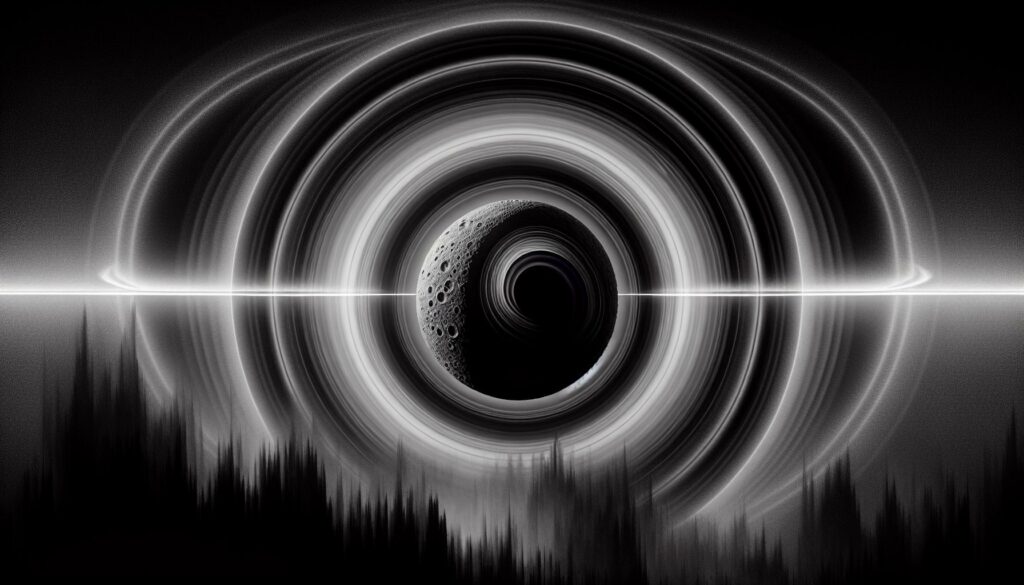I’ve always been intrigued by the rich tapestry of Inuit mythology, and Tarqeq is a figure that truly captivates my imagination. As the Inuit moon deity, Tarqeq plays a crucial role in their cosmology, influencing everything from the tides to the rhythm of life.


Exploring Tarqeq’s stories offers a fascinating glimpse into how ancient cultures perceived the night sky and its celestial bodies. In this article, I’ll delve into the origins of Tarqeq, his significance in Inuit traditions, and the enduring legacy he holds today.
Overview of Tarqeq
Tarqeq, the Inuit moon deity, holds a central role in Inuit cosmology. I recognise that he governs:
- Lunar Phases: Tarqeq’s transitions influence the moon cycle, affecting tides and nighttime illumination.
- Tides and Wildlife: He controls tidal movements, impacting marine life patterns and hunting practices.
- Seasonal Changes: Tarqeq’s cycle dictates season timing, guiding survival activities.
In Inuit traditions, Tarqeq travels across the night sky, marking time and regulating natural phenomena. I observe that artistic depictions portray him as a luminous presence, reflecting the moon’s role in daily life.


Through Tarqeq, the Inuit express their connection to celestial and terrestrial environments, highlighting their understanding of astronomy.
Discovery and Naming

Tarqeq was discovered on January 16, 2007, by a team of dedicated astronomers. The moon’s naming aligns with the Inuit tradition among Saturn’s moons.
Historical Context
Tarqeq is part of Saturn’s Inuit group, which includes moons such as Kiviuq, Ijiraq, Paaliaq, and Siarnaq. The discovery was made by astronomers Scott S. Sheppard, David C. Jewitt, and Jan T. Kleyna during observations conducted from January 5, 2006, to March 22, 2007.
Naming Significance
Initially designated as S/2007 S 1, Tarqeq received its permanent name on September 20, 2007, as announced in IAU Circular 8873. Additionally, it is referred to by its IAU designation, Saturn LII.
Discovery Details
| Detail | Information |
|---|---|
| Discovery Date | January 16, 2007 |
| Discoverers | Scott S. Sheppard, David C. Jewitt, Jan T. Kleyna |
| Temporary Designation | S/2007 S 1 |
| Permanent Name | Tarqeq |
| IAU Designation | Saturn LII |
Physical Characteristics

I explore Tarqeq’s unique physical attributes that distinguish it among Saturn’s moons. These characteristics provide valuable insights into its formation and composition.
Size and Composition
Tarqeq measures approximately 6 kilometres (3.7 miles) in diameter, with an equatorial radius of about 3.0 km (1.9 miles). Its equatorial circumference stands at roughly 18.8 km, encompassing a surface area of 113.10 km². The moon’s density is estimated at 2.3 g/cm³, and it reflects only 6% of incoming sunlight, indicated by an albedo of 0.06. The following table summarizes these metrics:
| Metric | Value |
|---|---|
| Diameter | 6 km (3.7 mi) |
| Equatorial Radius | 3.0 km (1.9 mi) |
| Equatorial Circumference | 18.8 km |
| Surface Area | 113.10 km² |
| Density | 2.3 g/cm³ |
| Albedo | 0.06 |
These measurements highlight Tarqeq’s small, dark, and irregular nature among Saturn’s moons.
Orbital Dynamics
Discovery and Group Membership
I discovered that Tarqeq was identified on 16 January 2007 by astronomers Scott S. Sheppard, David C. Jewitt, and Jan T. Kleyna at the Mauna Kea Observatory in Hawaii. Tarqeq is a member of Saturn’s Inuit group, which also includes Kiviuq, Ijiraq, Paaliaq, and Siarnaq.
Orbital Parameters
- Mean Distance: Tarqeq orbits Saturn at approximately 17.9 million kilometres (11.1 million miles).
- Orbital Period: It completes one orbit around Saturn in 894.86 days (2 years and 5 months).
- Inclination: The orbit is inclined at 49.90° to the ecliptic and 49.77° to Saturn’s equator.
- Eccentricity: Tarqeq’s orbit has an eccentricity of 0.1081, indicating a slightly elongated path.
Orbital Direction and Type
Tarqeq maintains a prograde orbit, meaning it travels in the same direction as Saturn’s rotation.
Surface Features
Tarqeq’s surface remains largely enigmatic due to its diminutive size and distant orbit around Saturn. Measuring approximately 6 kilometres in diameter, this irregular moon presents a roughly ellipsoidal shape. The limited data available suggests a surface area of 113.10 km², which, coupled with a volume of 113 km³, indicates a relatively uniform composition.
The moon’s low albedo of 0.06 signifies a dark surface that reflects only 6% of incoming sunlight. This darkness likely results from a composition rich in dark materials, such as carbonaceous compounds or silicate rocks, which absorb most of the sunlight. Despite its small size, Tarqeq’s density of around 2.3 g/cm³ hints at a rocky interior, possibly containing a mix of ice and rock, typical of many Saturnian moons.
Surface irregularities are expected, given Tarqeq’s ellipsoidal form and the gravitational influences from Saturn. Craters, ridges, and grooves may adorn its terrain, although high-resolution imaging is lacking. The moon’s surface remains a subject of interest, as future missions could provide more detailed insights into its geological history and composition.
Exploration and Research
Tarqeq remains primarily studied through telescopic observations due to its small size and distant orbit. Utilizing the Subaru 8.2-m reflector at Mauna Kea Observatory, astronomers Scott S. Sheppard, David C. Jewitt, and Jan T. Kleyna first observed Tarqeq in 2007. Subsequent studies have focused on refining its orbital parameters and physical characteristics.
Observational Studies
Telescopic data has provided insights into Tarqeq’s orbit and surface properties. Researchers have determined its mean distance from Saturn to be approximately 17.9 million kilometers, with an orbital period of 894.86 days. The moon’s eccentricity of 0.1186 and inclination of 49.90° to the ecliptic inform models of its orbital dynamics within Saturn’s Inuit group.
Physical Characterization
Analysis of Tarqeq’s albedo, measured at 0.06, suggests a dark surface likely composed of carbon-rich materials or silicate rocks. Its estimated diameter of 6 kilometers classifies it among the smaller moons, impacting its gravitational interactions and potential geological activity. The mean radius of 3 kilometers aids in calculating its surface area and mass distribution.
Future Research Directions
Advancements in telescope technology promise more detailed observations of Tarqeq. High-resolution imaging could reveal surface features such as craters or grooves, offering clues about its geological history. Additionally, spectral analysis may uncover composition details, enhancing understanding of its formation and relationship with other Inuit moons.
Data and Statistics
| Parameter | Value |
|---|---|
| Mean Distance | 17.9 million km (11.1 million mi) |
| Orbital Period | 894.86 days (2 years, 5 months) |
| Eccentricity | 0.1186 |
| Inclination | 49.90° to the ecliptic |
| Diameter | ~6 km (3.7 mi) |
| Mean Radius | ~3 km (1.9 mi) |
| Albedo | 0.06 |
| Density | 2.3 g/cm³ |
Ongoing research aims to monitor Tarqeq’s orbital stability and potential interactions with other moons in the Inuit group. Collaborative efforts between international observatories enhance the precision of collected data, contributing to a comprehensive understanding of Saturn’s diverse moon system.
Key Takeaways
- Central Role in Inuit Cosmology: Tarqeq, the Inuit moon deity, governs lunar phases, tides, and seasonal changes, playing a pivotal role in Inuit traditions and daily life.
- Discovery and Naming: Identified on January 16, 2007, Tarqeq is part of Saturn’s Inuit group of moons and was named following Inuit cultural traditions.
- Physical Characteristics: Tarqeq is a small, dark moon with a diameter of approximately 6 kilometres and an albedo of 0.06, indicating a surface rich in dark materials.
- Orbital Dynamics: It orbits Saturn at a mean distance of 17.9 million kilometres, completing an orbit every 894.86 days with a prograde direction and an inclination of nearly 50°.
- Ongoing Research and Future Studies: Current studies rely on telescopic observations, with future research aiming to uncover more detailed surface features and composition through advanced imaging and spectral analysis.
Conclusion
Exploring Tarqeq reveals not just the intricacies of a distant moon but also the rich tapestry of Inuit mythology. His influence on tides and seasonal changes highlights the deep connection between celestial bodies and everyday life.
Tarqeq stands as a testament to the blend of culture and astronomy, offering insights into both ancient beliefs and modern scientific discovery. Understanding his role enriches our appreciation of the natural world and the stories that shape our understanding of the cosmos.
Frequently Asked Questions
What is Tarqeq in Inuit mythology?
Tarqeq is the Inuit moon deity, revered in Inuit mythology and cosmology. He governs the lunar phases, influencing tides and the illumination of the night sky. Tarqeq plays a crucial role in regulating natural phenomena, marking time, and guiding seasonal changes essential for Inuit survival activities. Often depicted as a luminous presence, Tarqeq embodies the connection between celestial bodies and the daily lives of the Inuit people, reflecting their deep understanding of astronomy and the environment.
How does Tarqeq affect tides and marine life?
Tarqeq controls the lunar phases, which directly influence tidal movements. These tidal changes impact marine life patterns, affecting the availability and behaviour of marine resources essential for Inuit hunting practices. By regulating the tides, Tarqeq ensures the timing of fishing and hunting activities aligns with natural cycles, aiding in the sustainability and success of these practices. This influence underscores the deity’s importance in maintaining the balance between the Inuit community and their marine environment.
When and how was Tarqeq discovered as a moon of Saturn?
Tarqeq, a moon of Saturn, was discovered on January 16, 2007, by astronomers Scott S. Sheppard, David C. Jewitt, and Jan T. Kleyna. Initially designated as S/2007 S 1, it was later named Tarqeq on September 20, 2007, as announced in IAU Circular 8873. Tarqeq is part of Saturn’s Inuit group of moons, which includes Kiviuq, Ijiraq, Paaliaq, and Siarnaq. The discovery was made using advanced telescopic observations, highlighting Tarqeq’s place within the broader family of Saturnian satellites.
What are the physical characteristics of Tarqeq?
Tarqeq measures approximately 6 kilometres (3.7 miles) in diameter with an equatorial radius of about 3.0 km (1.9 miles) and a surface area of 113.10 km². It has a density of 2.3 g/cm³ and reflects only 6% of incoming sunlight, indicated by an albedo of 0.06. These attributes make Tarqeq a small, dark, and irregular moon among Saturn’s satellites. Its rocky interior suggests a composition of carbonaceous materials or silicate rocks, potentially mixed with ice, contributing to its unique physical profile.
Describe Tarqeq’s orbital dynamics around Saturn.
Tarqeq orbits Saturn at an average distance of approximately 17.9 million kilometres (11.1 million miles) and completes one orbit in 894.86 days (about 2 years and 5 months). Its orbit is inclined at 49.90° to the ecliptic and 49.77° to Saturn’s equator, with an eccentricity of 0.1081, indicating a slightly elongated path. Tarqeq maintains a prograde orbit, moving in the same direction as Saturn’s rotation. These orbital characteristics place Tarqeq within the Inuit group of Saturn’s moons, influencing its interactions with other satellites.
Why is Tarqeq’s surface still largely unknown?
Tarqeq’s surface remains enigmatic due to its small size and distant orbit, which make high-resolution imaging challenging with current technology. With a low albedo of 0.06, its dark surface likely consists of carbonaceous materials or silicate rocks, contributing to the difficulty in observing surface features. Although surface irregularities like craters and grooves are expected, limited observational data means much about Tarqeq’s geology and composition remains speculative. Future missions and advancements in telescope technology may provide more detailed insights.
How is Tarqeq being studied by astronomers?
Astronomers study Tarqeq primarily through telescopic observations, utilizing facilities like the Subaru 8.2-m reflector at Mauna Kea Observatory. These observations help refine Tarqeq’s orbital parameters and physical characteristics. Ongoing research focuses on its orbital stability, potential interactions with other Inuit group moons, and advancements in telescope technology that enable more detailed analysis. High-resolution imaging and spectral analysis are key areas of interest, aiming to uncover surface features and composition details to better understand Tarqeq’s formation and relationship with its celestial neighbours.
What distinguishes Tarqeq from other moons in Saturn’s Inuit group?
Tarqeq stands out among Saturn’s Inuit group of moons due to its small size, measuring approximately 6 kilometres in diameter, and its dark surface with a low albedo of 0.06. Unlike some of its sibling moons, Tarqeq’s physical characteristics suggest a rocky interior potentially mixed with ice and silicate rocks. Its unique orbital dynamics, including its specific inclination and eccentricity, also differentiate it. These distinctions provide valuable insights into the formation and diversity of Saturn’s moons, highlighting Tarqeq’s irregular nature within the Inuit family.
How does Tarqeq reflect Inuit cultural connections to astronomy?
Tarqeq embodies the Inuit people’s connection to the celestial environment, serving as a deity that regulates important natural phenomena like tides and seasonal changes. By governing the moon’s phases and influencing marine life patterns, Tarqeq reflects the Inuit’s deep understanding of astronomy and its practical applications in daily life and survival. Artistic depictions of Tarqeq as a luminous presence in the night sky underscore the cultural significance of the moon, illustrating the harmonious relationship between the Inuit community and their surrounding celestial and terrestrial landscapes.
Author

Josh Morley holds a Bachelor’s degree in Theology from the Trinity School of Theology and a Diploma in Theology from the Bible College of Wales. His academic journey involved interfaith community projects and supporting international students, experiences that shaped his leadership and reflective skills. Now based in Liverpool, Josh is also the founder of Marketing the Change, a digital agency specializing in web design and marketing.
View all posts





